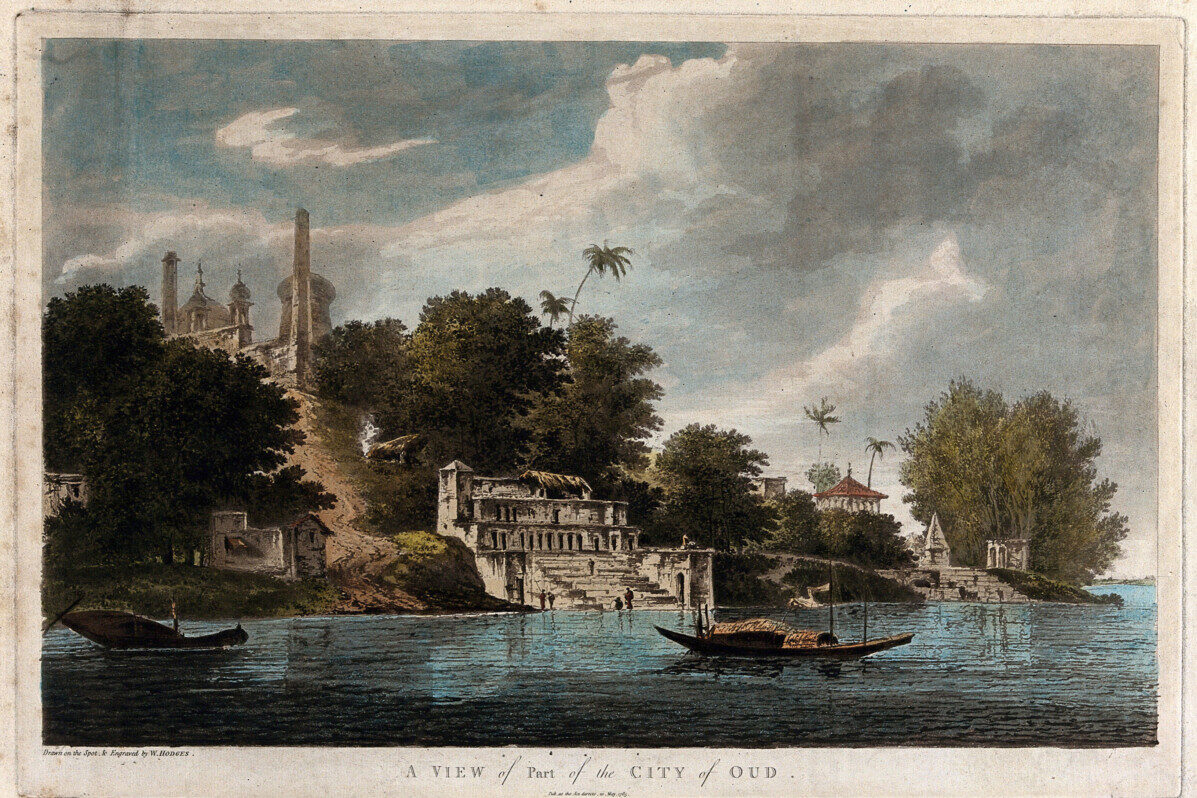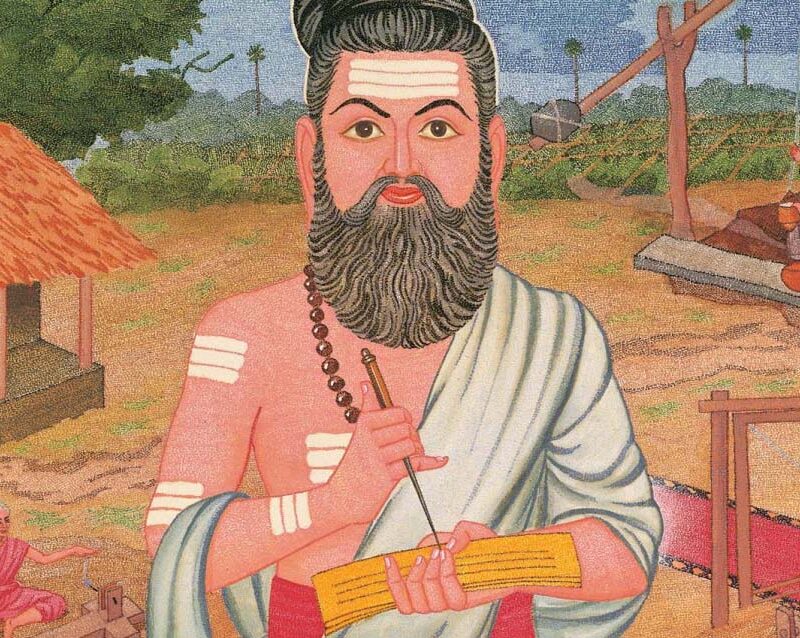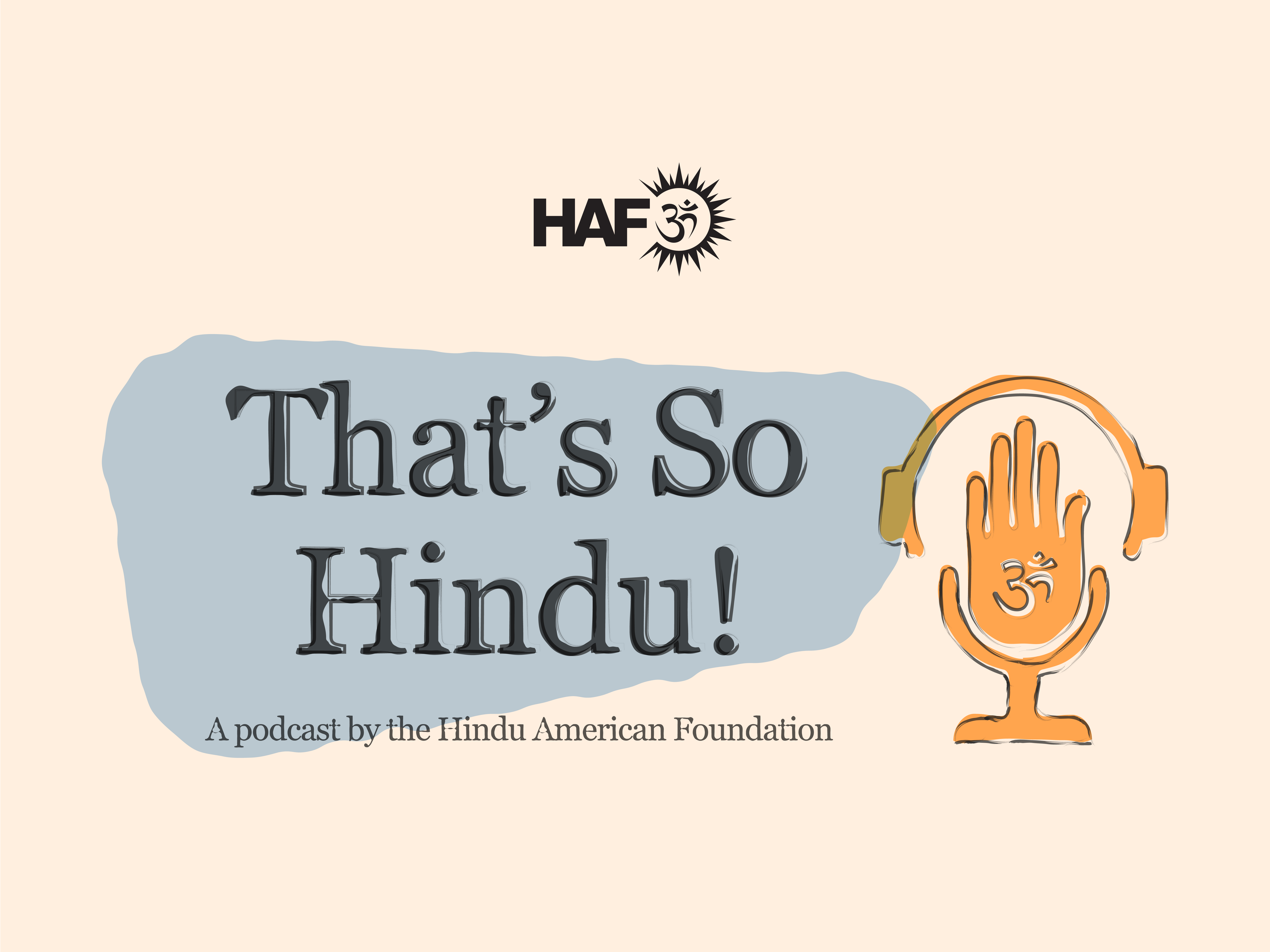
Ayodhyā mathurā māyā kāśī kāñcī hy avantikā | purī dvāravatī caiva saptaitā mokṣadāyikā ||“These are the seven sacred cities that bestow liberation upon seekers: Ayodhya, Mathura, Haridwar, Varanasi, Kanchipuram, Ujjain, Puri, and Dwarka.” — Garuḍapurāṇa — (16.114)
Every world religion has certain places that are irreplaceably sacred in the eyes of its followers.
Muslims, for example, have Mecca, considered the fountainhead of Islam. It’s here, the prophet Muhammad was born, where he’s believed to have received the Quran, and where the Kaaba, revered as “the house of god,” resides in all its venerated glory. Christians, on the other hand, have the Old City of Jerusalem, where the Church of the Holy Sepulchre — regarded as the site Jesus was crucified, buried, and resurrected — calls on all who yearn to see it. And for those who are Jewish, the same city is just as significant, but for reasons different, paramount of which being the Temple Mount, where stood the Jewish Temple, said to have housed the Ark of the Covenant.
Hinduism, as it happens, also has places of such significance, known as Sapta Puri, or seven most-sacred cities. Lacking, however, the same global recognition afforded those of other major religions, few non-Hindus are aware of their key sites, much less the controversies surrounding them.
Here’s a little to know about Hinduism’s seven most-sacred places.
1) Ayodhya
India has given birth to many great stories, all of which have brought some level of joy, solace, and inspiration to those who have heard them. But if there’s one that has permeated Hindu consciousness and culture deeper than any other, The Ramayana, detailing the life and pastimes of Prince Ram, might just be it.
An ancient Sanskrit epic of love, friendship, courage, and sacrifice, the narrative has also been told in the vernacular languages of every region in India, making Ram, who is seen as a divine embodiment of dharma, or righteousness, an especially penetrating symbol of devotion. As his popularity has extended beyond India and Hinduism to people of other countries and faiths, the places associated with his story have become increasingly sought after pilgrimage destinations, foremost of them being Ayodhya, containing the immensely sacred site of his birth.
The area has been tangled in controversy, however, going back hundreds of years when Babur, the first Mughal emperor, destroyed the last and largest Hindu temple located there in 1528, replacing it with a mosque that came to be known as the Babri Masjid. Hiding the remains of what stood long before, archaeological evidence confirming this fact was eventually unearthed after the mosque’s controversial removal in 1992, culminating in a 2019 Supreme Court order allowing for a new Hindu temple to be built.
In January 2024, consecration of the sacred icon of the infant Ram finally took place in the sanctum of the new temple under construction, as celebrations rang across the global Hindu diaspora, bold and true. And though there are many who, unaware of the site’s monumental significance, may continue to show dissent, the celebrations will press on. The devotion that fuels it, after all, has persevered for thousands of years, and will continue to do so for thousands more.
2) Mathura
To some, he is a figure of myth, especially enshrined in ancient lore as the speaker of The Bhagavad Gita, Hinduism’s most widely read text. To others, he is something more, a powerful avatar of Vishnu (the god of preservation) who, like Ram, descended to uphold righteousness, and do away with those who would oppose it. And for others more, his transcendent stature goes ever further, reaching the heights of divinity, as the supreme spiritual being from whom all of creation manifests and exists.
However one may view him, one thing’s for sure, from north to south to east to west, Krishna is embedded in the spiritual psyche of numerous within and beyond India, his many pastimes cherished throughout for their profound displays of love and devotion. Hoping to delve deeper into the mood of this devotion, devotees visit the prominent sites of his time on earth, which began, of course, in the place he was born, Mathura.
Flowing through the city by the thousands, for millennia pilgrims have gravitated towards a number of worshipable spots here, including, naturally, the Krishna Janmasthan Temple Complex, located in the area he took birth. While, for the most part, the premises serves the desired function of enabling devotees to honor Krishna’s earthly appearance, it, like Ram’s birthplace, is also not without controversy.
Before the current structures were established, there was a much older shrine, believed by some to have been erected thousands of years ago by Krishna’s great-grandson, Vajranabha. Whether this is true, what we do know is that a temple called Keshava Deva was later built as an expansion of the site, destroyed and reconstructed several times throughout the Mughal period until, in the 17th century, Aurangzeb finally had it replaced with a mosque.
Though the building of today’s complex was eventually made possible in the vicinity, Aurangzeb’s mosque is still there, sitting adjacent to it on the remains of Krishna’s original birth shrine.
Eager to reclaim access to the site, Hindus have been engaged in an ongoing legal dispute, hoping to honor it as it once was, in all its glory. Needless to say, the future is uncertain, yet whatever the result, the devotional power of Krishna’s pastimes will forever stand, impervious to the touch of time, place, and circumstance.
3) Haridwar
The Ganga is India’s largest river basin, streaming through roughly 1,569 miles of northern country. Irrigating numerous farmlands, villages, towns, and cities along the way, it has been a vital cog in the nation’s economy, providing support to the region since before the dawn of civilization.
Still, discerning the sacred in all, Hindus view the waterway as more than just a resource of sustenance. Hailed as a motherly goddess whose constant flow of compassion is worthy of the highest worship, devotees can be found bathing everywhere along her banks, paying their respects in a spirit of deep gratitude. And while each spot, imbued by the goddess’ presence, is capable of awarding the kind of benefit promised in texts dating back thousands of years, there are a few places considered distinctly beneficial, with Haridwar housing an exceptionally potent one.
Known as the “Gate of the Ganga,” where the river leaves the Himalayan mountains and enters India’s plains, the city is replete with bathing sites, yet none more popular than Hari Ki Pauri, the “Feet of Hari.” Invoking the divine essence of Mother Ganga’s spiritual origin, said to be from the toe of Vishnu himself, the amphitheater-like pool — its edges dotted by her shrines — bustles with activity, especially for evening worship. And during the city’s great festivals, like the mammoth Kumbha Mela that happens every 12 years, the place becomes further inundated by pilgrims, who show up by the millions to bathe in her waters.
Gathered together, all watch with reverence as the priests of the area offer brass oil lamps in her honor. Setting the air ablaze with a fire of gratitude, they chant prayers and ring bells, while she glimmers as the liquid goddess, who gives freely to all without asking anything in return.
4) Varanasi
Shiva, according to a 2021 Pew study on religion in India, is the deity Hindus most commonly feel close to, making his worship unquestionably common within a tradition containing some 1.2 billion people.
His temples, countless in number, can be found in all parts of the country, providing solace and inspiration to the wide spectrum of his devotees. Each shrine offering unique insight to the multilayered complexion of his enigmatic identity, those who revere him most know, of all his manifestations, 12, referred to as jyotirlingas (“emblems of sacred light”), are especially great, and among them, one stands out above the rest — in a place called Varanasi. Famous to Hindus as Kashi, or the “Shining City,” where Shiva is said to have transformed into an unfathomable column of light in a display of his boundless potency, Varanasi is one of India’s most important pilgrimage sites, serving as a center of learning, philosophy, and spiritual pluralism throughout the years.
Home to hundreds of sanctums, large and small, Kashi Vishvanatha, the “Golden Temple,” is its most popular, situated where Shiva’s light is believed to have pierced the earth. But like the Janmasthan complex in Mathura, it too is a replacement of a much older temple that was destroyed and reconstructed several times over the centuries, before being turned into a mosque by Aurangzeb in the 17th century.
And though there’s no telling whether a temple will be able to stand there again, in January 2024, the Varanasi district court permitted Hindus to pray in one of the mosque’s cellars, sparking immense joy in the hearts of adherents all over. Things may not always play out exactly as devotees desire, but as long as they remain determined in their devotion, Shiva’s light will never go out in Varanasi.
5) Kanchipuram
India is known as the land of temples. To call one of its cities unique for having a lot of them, therefore, may seem a little absurd. Yet, those who’ve been to Kanchipuram know: its epithet, the “City of a Thousand Temples,” is well-earned, even if there aren’t quite that many.
Unlike most temple towns in Tamil Nadu, where a single sacred compound occupies the urban center, Kanchipuram is strewn with shrines throughout, as an intricate jumble of streets weaves to and between them. Seemingly extraneous to present eyes, the city’s many religious sites played a pivotal role in helping it flourish between the 7th and 12th centuries, functioning as spaces where diverse groups could not only worship, but participate in a dynamic interplay of economic and political exploration. Thus an important center of knowledge that welcomed those of all religious backgrounds, Kanchipuram was a pluralistic hub, and its numerous temples a powerful reflection as such.
Today, the thousands of pilgrims who flood the city everyday, while in awe of the copious structures surrounding them, usually know about five prominent ones, of which the Kamakshi Amman Temple is the most famous. Dedicated to Kamakshi, a manifestation of Goddess Parvati, she is revered as a motherly aspect of the Divine who performed severe austerities to win the love of her consort Shiva.
Sitting on a lotus pedestal where these austerities are said to have taken place, her golden icon has attracted countless seekers over the centuries, beckoning them to dive into a similar tenor of devotion. Bearing the spiritual heart of the city, she helps all tap into the divine benefits Kanchipuram has to offer, regardless of the temples they do or don’t visit beyond her.

Photo courtesy of British Library WD 3426
6) Ujjain
Varanasi might be home to the most popular of Shiva’s 12 great manifestations, but don’t let that fool you into thinking it’s the only jyotirlinga city worth knowing about.
Sure, Kashi is the “Shining City,” where he is revered for having displayed his boundless potency, however, in Ujjain he dwells in a particularly profound aspect of his called Mahakala, or the “Great Lord of Time.” A fitting name, this other city of his indeed seems to stretch beyond the boundaries of age, eternalized in some of Hinduism’s oldest texts — mentioned even as a place where a drop landed from the gods’ vessel of amrita, or immortal nectar.
Yet, even for those who don’t buy into such unfathomable ideas of antiquity, Ujjain is still ancient as they come, reaching back at least to the time of Buddha, when it was known as the capital of the kingdom of Avanti. Flourishing also during the golden age of the Gupta empire, between the third and sixth centuries, it was the famed poet Kalidasa himself who described the city as one that must have been built by those from heaven.
Though lacking the same renown of its illustrious past, Ujjain has grown in recent decades, with the expansion of business, industry, and spiritual commerce. Exceptionally busy during Simhastha, a month-long mela that happens every 12 years, millions of pilgrims inundate the city’s various sites, of which the Mahakaleshwar Temple is most prominent
There, where Shiva is said to have appeared in fierce protection of his loyal devotees, the linga of Mahakala resides in a three-story structure, surmounted by a tall shikhara that pierces the sky. A sight of power and solace, devotees throng to its shelter, under which they pray to be shielded from the ceaseless onslaughts of spiritual adversity.
7) Dvarka
Krishna was born in Mathura, and so the city, as conveyed above, is a natural pilgrimage destination, drawing devotees from all over the world who aspire to bask in the spirit of his devotional glory.
Devotional glory, however, has many shades depending on the set of pastimes one chooses to delve into. While emphasis is given to places like Krishna’s birth site, which immerses one in the exultant fortune of his sacred appearance, the poignant settings of his departures are also important, counterintuitive as this might seem. Engulfing followers in the piercing ache of separation, they have a way of deepening one’s meditation, thereby increasing a person’s connection to Krishna in the most earnest of ways. It should thus come as no surprise that those looking to attain such connection actively seek the places known for his disappearances, and that Dvarka, where he spent the last chapter of his earthly life, is one that’s high upon the list.
Shrouded in legend, the ancient kingdom of Dvarka is where Krishna is said to have ruled in his adult years, on the far-westernmost point of Saurashtra, the peninsular region of Gujarat. There on the seacoast, he built his illustrious capital, believed to have been laid out by Vishvakarma himself, the architect of the gods. Constructed from the finest of materials, it was seen as heaven on earth, and stood as such until the day Krishna left the world, after which, according to ancient texts, the sea rose and submerged the city, turning it into but a memory in a matter of moments.
Though, to many, the account is nothing more than a fable of myth, the story still has elicited immense interest over the centuries, sparking several major archaeological expeditions in the area, which indeed have led to the discovery of what appear to be city remains lying beneath the coastal waters. Yet, captivating as these findings are, whether they actually prove the historicity of Krishna and his kingdom is really only marginally pertinent to the faithful who travel from far and wide to visit the city as it exists today.
It’s there, after all, where one can find the Dwarkadish Temple, on the edge of the ocean, brandishing a huge golden flag that flies atop its towering shikhara. Thought by some, like the original Janmasthan shrine in Mathura, to have been erected thousands of years ago by Krishna’s great-grandson, its original structure was also destroyed under Islamic rule, before being rebuilt sometime during the 15th to 16th centuries.
In any case, the temple’s deity — a jet-black, four armed image of Krishna in the demeanor of a royal monarch — has endured as the city’s central focus, standing as more than just an emblem of a possible past. Residing in all his eminence, he serves as a window to a great and powerful spiritual one, inviting pilgrims to come and explore the depths of a devotion more vast than the oceanic waters surrounding him.
If you enjoyed this piece, then you may also be interested in reading “Char Dham: the pilgrimage tour that takes you around all of India”














































